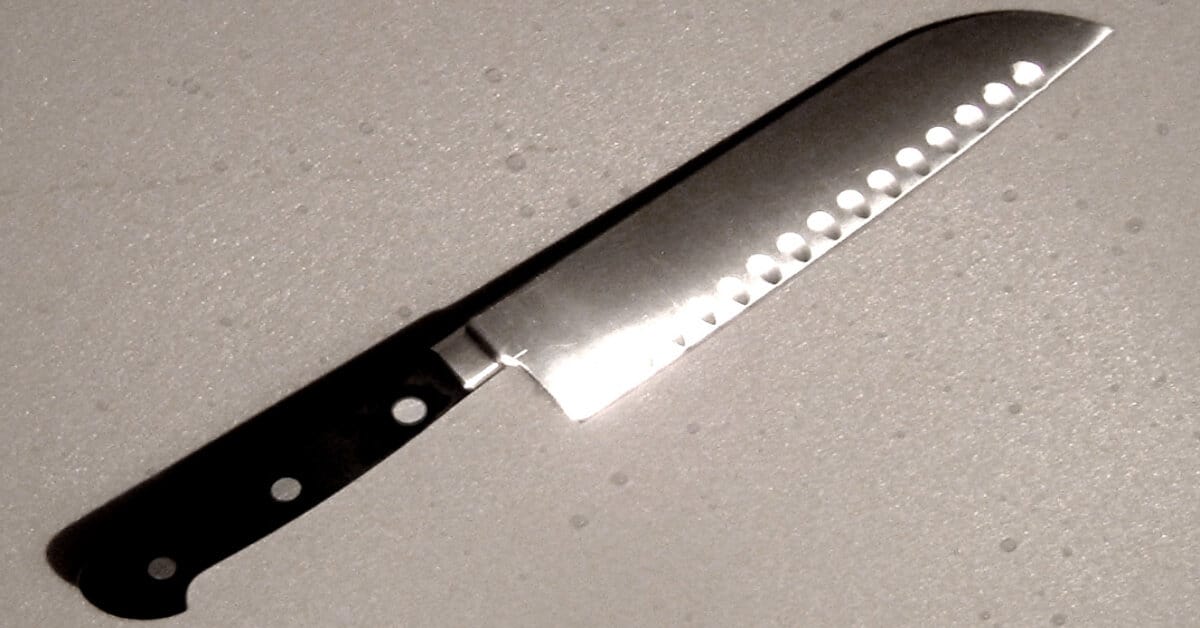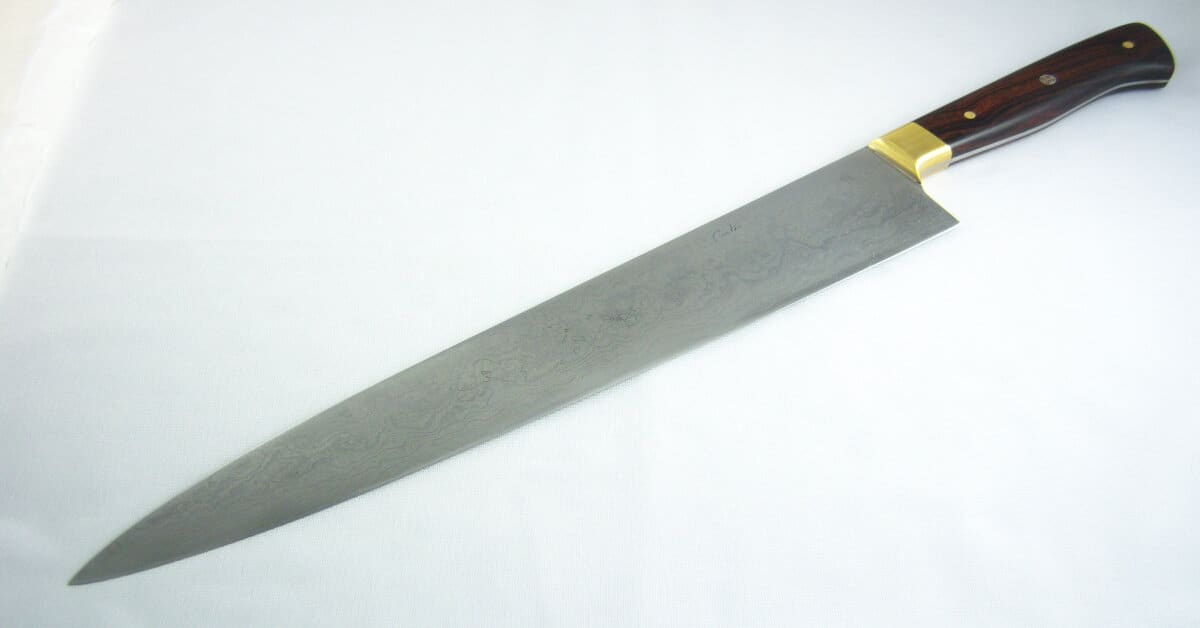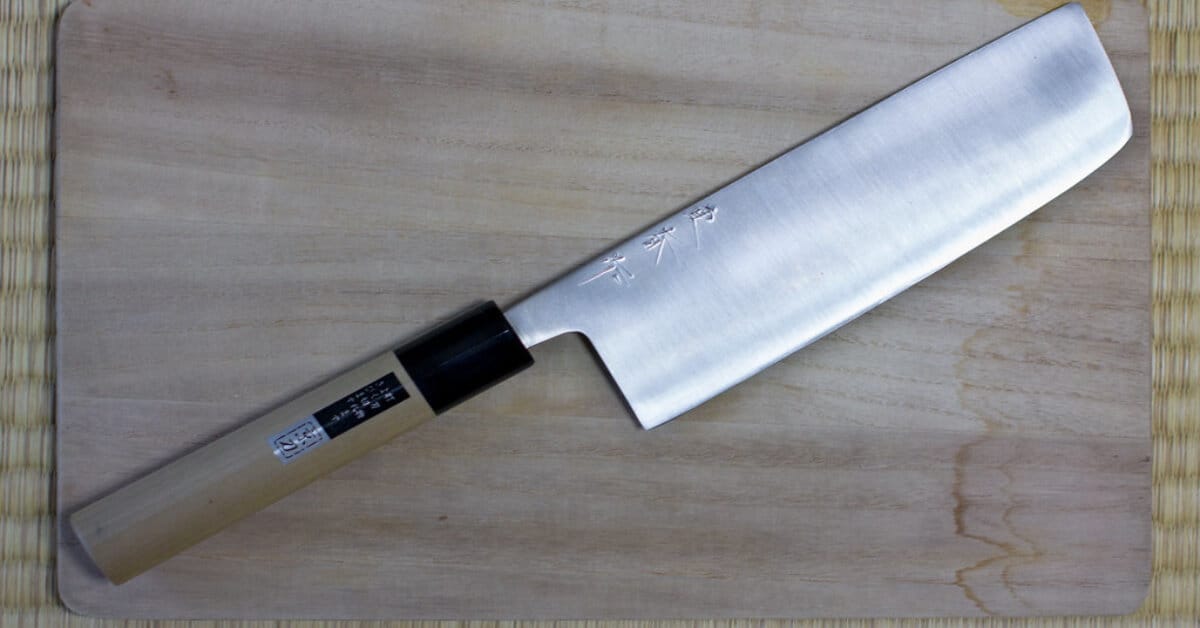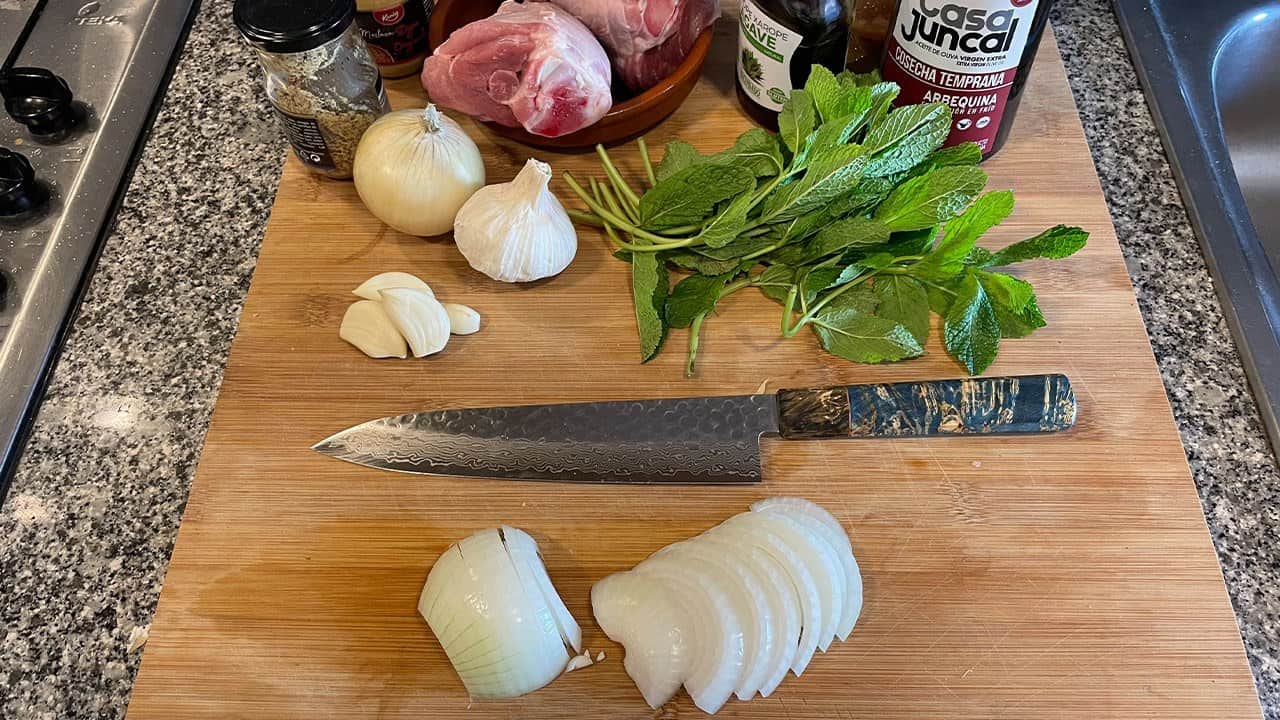The Santoku knife is a Japanese kitchen knife that has been growing in popularity in the United States in recent years. But what is it? What are its uses? And should you buy one for your kitchen? In this guide, we will answer all those questions and more. We will start by discussing the history of the Santoku knife and how it differs from the chef’s knife. Then we will go over what it is good for and give some tips on how to use and maintain one. Finally, we will give you our verdict on whether or not you should buy a Santoku knife for your kitchen!
A Little History on the Santoku Knife
The word Santoku means “three uses” or ” three virtues, which gives you an idea of the multi-purpose nature of the blade. It is good for slicing, dicing, and mincing. Despite its rather quaint name, the Santoku knife is not a very old type of Japanese knife and was first developed in the 1940s. It was created as a general-purpose kitchen knife that would be suitable for home cooks and evolved from the traditional Japanese vegetable knife, called Nakiri. The Nakiri looks like a small cleaver and you can see similarities in the design with the Santoku offering a much more refined aesthetic than the more traditional Nakiri.
The Santoku knife is shorter and lighter than the traditional Japanese chef’s knife, the Gyuto. It has a straighter edge and a sheepsfoot blade, which makes it great for slicing vegetables. A lot of modern Santoku knives also has a granton edge, which is a series of small indentations on the side of the blade that help to prevent food from sticking.
The Gyuto, or chef’s knife, is the standard Japanese kitchen knife. It is longer and heavier than the Santoku knife and has a curved edge that is great for chopping meat. The Gyuto is considered to be more versatile than the Santoku, but it is not as good for slicing vegetables.
The Santoku Knife vs. The Chef’s Knife
So how does the Santoku knife differ from the chef’s knife? Well, for one, the Santoku is shorter and lighter. It also has a straighter edge and a sheepsfoot blade, which makes it great for slicing vegetables. Western chef knives tend to be heavier as they are used to break down birds such as chickens, whereas Santoku knives are supposed to handle much more delicate forms of cookery.
Can a Santoku knife replace a chef’s knife?
The Santoku knife can be used for most things that you would use a chef’s knife for, but it is not as versatile. The Santoku is better for slicing and dicing vegetables, whereas the chef knife is better for chopping meat. If you are looking for a general-purpose kitchen knife, then the Santoku is a good option, although there will be situations when a chef knife would be better suited to the task, such as breaking down a chicken. This means that it depends on your preferred style of cooking, whether the Santoku knife could replace the chef knife in your kitchen.
How Do I Sharpen a Santoku Knife
Now that we have covered what a Santoku knife is and how it differs from other knives, let’s go over some tips on how to use and care for one. First, let’s talk about sharpening. The Santoku knife is a Japanese knife and as such, it is designed to be sharpened with a whetstone. If you are new to sharpening knives, then we recommend watching some videos or reading some articles on the subject before you get started.
Once you have your whetstone, you will want to soak it in water for about 30 minutes. This will help to keep the stone from drying out too quickly. After the whetstone has soaked, you can begin sharpening your knife. Start by holding the Santoku knife at a 20-degree angle and use long strokes to sharpen the blade. Remember to sharpen both sides of the blade evenly.
Once you have sharpened the blade, you will want to hone it with a steel rod. This will help to keep the edge of the blade from becoming too dull too quickly. To hone the Santoku knife, hold it at a 20-degree angle and use long strokes on both sides of the blade.
In order to keep your Santoku knife in good condition, you will need to clean and dry it after each use. You should also apply a light coating of oil to the blade every few months. This will help to prevent the blade from rusting.
If you take care of your Santoku knife, it will last for many years. With proper care, your Santoku knife can become a trusted kitchen tool that you will reach for time and time again. Thanks for reading and happy cooking!
In Conclusion
The Santoku knife is a great option for those looking for a versatile and durable kitchen knife. It is perfect for slicing and dicing vegetables, but can also be used for chopping meat. Also, if you take care of your Santoku knife, it will last for many years. Thanks for reading and happy cooking!
FAQs
What is a Santoku knife best for?
A Santoku knife is best for slicing vegetables and fruits. The blade is thinner and lighter than a traditional chef’s knife, which makes it a good choice for minimally slicing delicate items. The Santoku’s concave indentations on the side of the blade help to guide food as it is being cut, and the dimpled edge prevents food from sticking to the knife.
Are Santoku knives good for cutting meat?
There is no simple answer to this question as it depends on a number of factors, such as the type of meat you are looking to cut and your personal preferences. However, many people find that Santoku knives are excellent for cutting meat, especially when compared to other types of knives. If you are looking for a versatile knife that can handle many different types of tasks, then a Santoku knife may be a good option for you.




